
views
- Rearrange furniture so it’s against the walls to absorb sound. Hang blankets on your walls to help muffle outside noise.
- Seal gaps around doors and windows with acoustic caulk and weatherstripping. Hang soundproof curtains to block more sound.
- Put up acoustic foam panels to absorb the sounds echoing in your room. Area rugs, throw pillows, and upholstery also help absorb noise.
- For a pricier but more effective solution, install a solid wood door and double-paned acoustic windows to dampen the noise.
Move furniture against the walls.

Large pieces of furniture absorb the sound coming in from outside. Rearrange your bedroom so the biggest pieces of furniture except for your bed are against the noisiest walls. Push your dressers, bookcases, or desk next to the walls since they’re heavier and will reduce outside noises the most. Position your bed away from shared or outside walls if you can so you’re less likely to hear loud noises while you sleep.
Hang blankets or tapestries on your wall.

Soundproof blankets and tapestries reduce noise through your walls. You can use any blankets you have at home, but blankets made for dampening sound will block out the most noise. Hang your tapestry or blanket by sticking adhesive Velcro strips on the noisiest wall. Then, just push the blanket or tapestry onto the strips so they stick. Alternatively, you could also hang up wall art since it will help absorb some of the noise.
Seal gaps around the door frame.
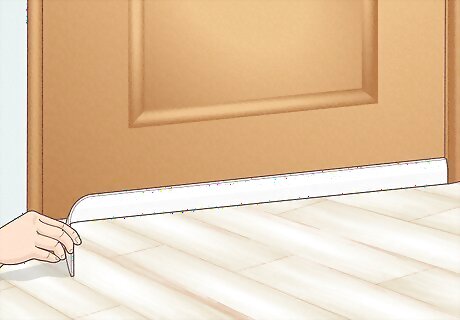
Adding door sweeps and weatherstripping stops noise from inside. Add door sweeps to the bottom of your door on each side to seal the gap. If there are any gaps between the frame and the door when you close it, install weatherstripping around the edges to block noises from getting in. Get weatherstripping that matches the color of your wood frame so it blends in better.
Close off air gaps around your windows.
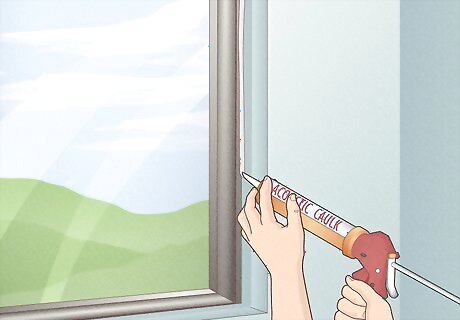
Acoustic caulk and weatherstripping stop outside noise from getting in. Hold your hand around the edges of your window frame to feel for drafts since that’s where sound leaks in from too. Use a caulk gun to fill in any small holes or gaps you find. Then, install a layer of weatherstripping around the edges of the window as an extra layer of soundproofing.
Cover the window with soundproof curtains.
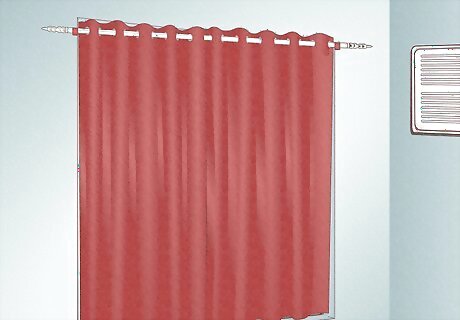
Soundproof curtains create a noise-dampening layer over your window. Get solid curtains that have soundproofing material built into them. Hang your curtains above your window and close them whenever you want a quiet, peaceful night in your room. Layering multiple curtains can help absorb even more noise before it can get into your room. Soundproof curtains also help block out light so your room stays darker, giving you a more restful night of sleep.
Block outside noise with a window plug.

A window plug fits tight against the pane to block the most sound. You can make your own window plug by stapling MLV soundproofing sheeting and neoprene foam to a piece of MDF wood. Just measure the inside of your window well and cut the materials to the same dimensions. Whenever you want to block out sound, push the window plug into the window well to stop noises from coming in.
Put thick rugs or carpet on the floor.
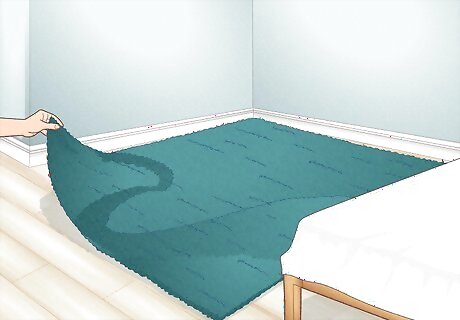
An area rug or carpets work stop echoing sounds from footsteps. Sound bounces off of hard floors, but rugs and carpets absorb all the ambient noise. Choose an area rug with thick material that fits in your bedroom and lay it out flat on your floor. If you want a more permanent solution, install wall-to-wall carpet in your room with a thick pad. Place a rug under your bed to give your bedroom a stylish look. If a rug doesn’t block out a lot of sound, you can get a soundproofing pad to put underneath it.
Fill your room with pillows and upholstered furniture.
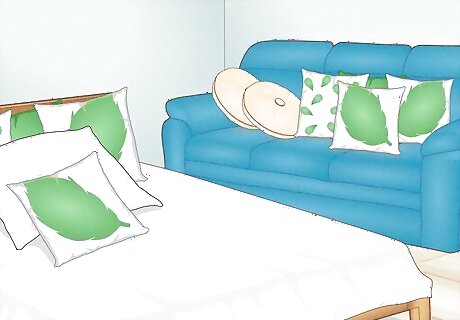
Soft materials are better at absorbing sounds in your bedroom. Decorate your bed with more pillows or a thick comforter since it will help your room sound quieter. If you have space, you could even put a small reading chair or a sofa with throw pillows in your room for extra soundproofing. Add an upholstered headboard—this will help with sound absorption and reduce noise.
Stick acoustic panels on your walls.
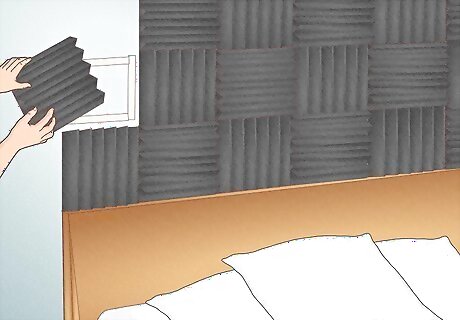
A layer of acoustic foam panels absorbs echoes from inside your room. While acoustic soundproofing panels don’t block out outside noise very well, they still work great for dampening sounds from inside. Hang the acoustic foam on your noisiest walls using adhesive strips. You can even put soundproofing panels on the ceiling and back of your door to block out additional echoes.
Replace hollow core doors with solid wood.
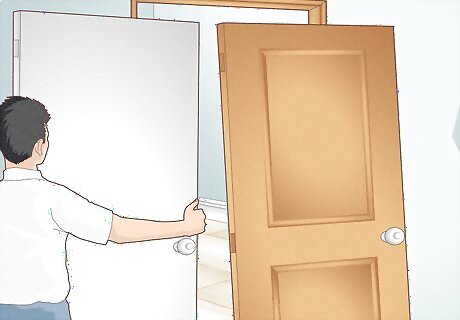
It’s harder for sound to travel through a thick door. If you have a hollow door, sound can reverberate inside and sound louder in your room. Take your door off the hinges and replace it with a heavier door that fits in the frame. Try to find a door that doesn’t leave any gaps or spaces between it and the floor. A new door made from solid wood could cost around $200–300 USD.
Invest in acoustic windows.
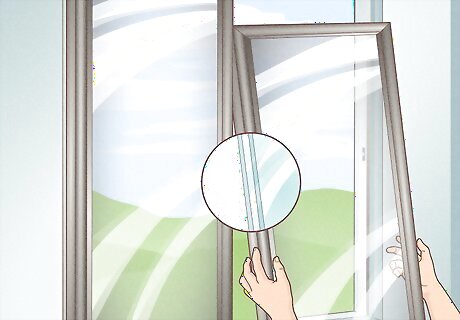
Acoustic windows have multiple layers of glass to dampen sounds. If you only have single-pane windows, sound can easily get inside. Replace your windows with double- or triple-pane acoustic alternatives instead. Outside sounds will bounce between the panes and get quieter before they can get inside Double-pane window prices depend on the size of the frame, but they’ll usually cost around $400–600 USD.




















Comments
0 comment